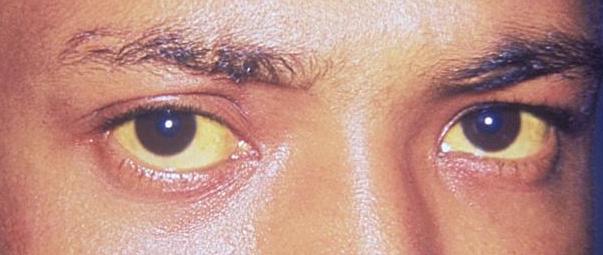Researchers at the University of Washington have developed an app that could let people self-screen for pancreatic cancer and other diseases via a smartphone selfie. BiliScreen uses a smartphone camera, computer vision algorithms and machine learning tools to detect increased bilirubin levels in a person’s sclera, or the white part of the eye.
Jaundice is an early symptom of pancreatic cancer and other illnesses. Jaundice is a yellowing of the skin and eyes from a buildup of bilirubin in the blood. By spotting the build up before it’s detectable by the naked eye, apps like BiliScreen offer a new avenue for screening program to those at risk. In an initial clinical study of 70 people, the BiliScreen app identified cases of concern 89.7 percent of the time, compared to the blood test currently used.
The app works in conjunction with a 3D printed box that controls the eye’s exposure to light.
Said lead author Alex Mariakakis: “The problem with pancreatic cancer is that by the time you’re symptomatic, it’s frequently too late…. The hope is that if people can do this simple test once a month, in the privacy of their own homes, some might catch the disease early enough to undergo treatment that could save their lives.”
Currently doctors use a blood test to track bilirubin levels. It is seldom given to adults unless there’s outward reason for concern, and administering the test requires a health care professional. That mkes it inconvenient for frequent restesting.
BiliScreen is meant to overcome these challenges, and help determine if a doctor’s visit is in order.
Said senior author Shwetak Patel: “The eyes are a really interesting gateway into the body — tears can tell you how much glucose you have, sclera can tell you how much bilirubin is in your blood…. Our question was: Could we capture some of these changes that might lead to earlier detection with a selfie?”
BiliScreen uses a smartphone’s built-in camera and flash to collect pictures of a person’s eye as they snap a selfie. The team developed a computer vision system to automatically and effectively isolate the white parts of the eye, which is a valuable tool for medical diagnostics. The app then calculates the color information from the sclera — based on the wavelengths of light that are being reflected and absorbed — and correlates it with bilirubin levels using machine learning algorithms.
To account for different lighting conditions, the team tested BiliScreen with two different accessories: paper glasses printed with colored squares to help calibrate color and a 3-D printed box that blocks out ambient lighting. Using the app with the box accessory — reminiscent of a Google Cardboard headset — led to slightly better results.
Said co-author Jim Taylor: “This relatively small initial study shows the technology has promise…. Pancreatic cancer is a terrible disease with no effective screening right now. Our goal is to have more people who are unfortunate enough to get pancreatic cancer to be fortunate enough to catch it in time to have surgery that gives them a better chance of survival.”



Is biliscreen app available for Android phones